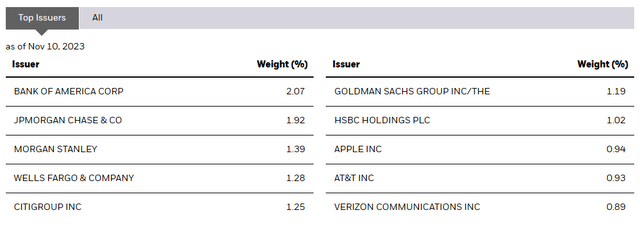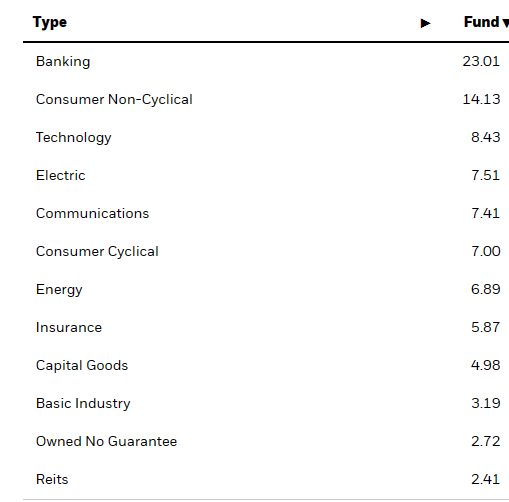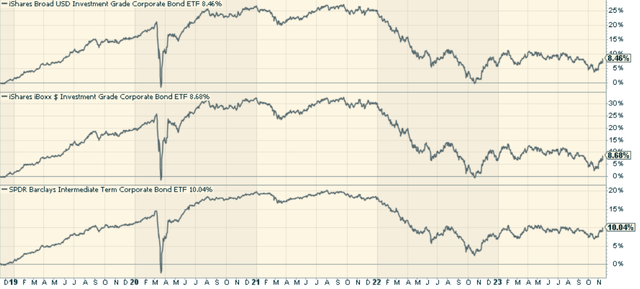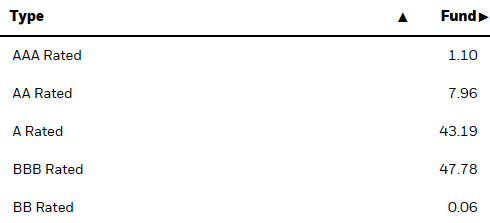It looks like the worst is finally over for bonds, which means there’s finally opportunity to consider allocating to fixed income play. The iShares Broad USD Investment Grade Corporate Bond ETF (NASDAQ:USIG) is an attractive investment option for investors looking for exposure to high-quality fixed income securities, although it still does have credit risk, which I remain concerned about. The fund aims to replicate the performance of the ICE BofA US Corporate Index, providing a diversified portfolio of dollar-denominated investment-grade corporate bonds. With its low cost, broad diversification, and credible management team, USIG is a compelling asset allocation choice.
Overview of USIG
USIG was launched in 2007 by BlackRock (BLK), a global leader in investment management, risk management, and advisory services. The fund has a gross expense ratio of 0.04%, making it a cost-effective choice for investors seeking broad exposure to the U.S. bond market. The fund held nearly 10,000 different bonds and had net assets of about $9.2 billion, reflecting its extensive diversification and substantial size.
The fund is designed to offer investors exposure to a wide array of U.S. investment-grade corporate bonds with varying maturities, from 1 to 10+ years. Its primary objective is to provide income while preserving capital. The fund’s 30-day SEC yield stands at 6.16%, highlighting its potential to generate regular income for investors. The overall dividend yield, while not at its highest, is historically solidly above average.
ycharts.com
Top Holdings
USIG’s portfolio is well-diversified, with the largest single holding accounting for only 2.07 of the fund’s total assets. This broad diversification helps to mitigate the potential impact of any single issuer’s default on the total fund performance.
ishares.com
Sector Composition and Weightings
The fund’s sector weightings reflect the broad diversification of its portfolio. The banking sector represents the largest share of the fund’s assets, likely reflecting the sector’s large debt issuance and strong credit ratings. Other significant sectors in the fund’s portfolio include consumer non-cyclicals, communications, and energy.
ishares.com
Peer Comparison
When comparing USIG to its peers, it’s important to consider factors such as expense ratios, portfolio composition, credit quality, and yield. For instance, the iShares iBoxx $ Investment Grade Corporate Bond ETF (LQD) is another popular investment-grade corporate bond ETF. However, USIG has a lower expense ratio (0.04% vs. 0.14% for LQD), more diversified portfolio, and a lower duration, which implies lower interest rate risk.
Another peer to consider is the SPDR® Portfolio Intermediate Term Corporate Bond ETF (SPIB), which also offers exposure to investment-grade corporate bonds. However, SPIB focuses on bonds with maturities between one and ten years, limiting its interest rate risk but also potentially limiting its yield.
The funds have largely performed in-line.
StockCharts.com
Pros and Cons of Investing in USIG
Investing in USIG offers several advantages. First, the fund provides broad exposure to the U.S. investment-grade corporate bond market, ensuring high levels of diversification. Second, USIG’s low expense ratio makes it a cost-effective choice for bond exposure. Third, the fund’s high-quality bond holdings offer a degree of security to investors, as investment-grade bonds are considered relatively low risk.
However, investing in iShares Broad USD Investment Grade Corporate Bond ETF also carries some risks. The fund’s performance is sensitive to changes in interest rates; when rates rise, bond prices tend to fall, which can negatively impact USIG’s performance. Additionally, while the fund’s holdings are investment grade, nearly half are rated BBB, the lowest investment-grade rating. This means that in periods of economic downturn, these bonds could be downgraded to junk status, potentially causing a decline in the fund’s value. I remain broadly concerned of this, though clearly my timing has been wrong thus far.
ishares.com
Conclusion: To Invest or Not to Invest?
While the fund carries some interest rate and credit risk, its extensive diversification, low costs, and potential for income generation make it a worthy consideration for many investors, especially given falling inflation and a Fed that may finally be done with interest rate hikes. Just keep the credit risk in mind in the event things turn south, as inevitably they do.
Read the full article here












